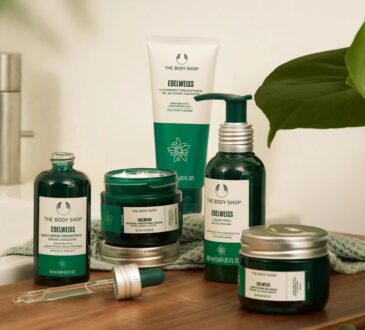
Article Summary
Choosing the right make up remover and face cleansers is essential for maintaining healthy skin and preventing clogged pores, irritation, and breakouts. This article explains how each product works, why they serve different purposes, and how to use them together for an effective daily skincare routine.
A proper skincare routine always begins with clean skin. However, many people assume that one product can do all the work. In reality, make up removers and face cleansers play different roles. While both help clean the skin, they address different types of impurities. Understanding how they work helps you choose the right products for your skin type and lifestyle.
What Is a Make Up Remover?
A make up remover is a product designed specifically to dissolve cosmetics, SPF residue, waterproof formulas, and long-wear makeup. These products break down pigments and oils that regular cleansers may not remove completely.
Types of Make Up Removers
1. Micellar Water
Contains tiny cleansing molecules (micelles) that attract dirt and oil. Great for sensitive skin or light makeup.
2. Cleansing Oils & Balms
These melt heavy makeup, waterproof mascara, long-wear lipstick, and sunscreen. Despite being oil-based, they work well on oily skin too because they bind to excess sebum without stripping the skin.
3. Makeup Wipes
Convenient but not ideal for everyday use. They can tug the skin and may not clean deeply. Best for travel or emergencies.
Why You Need a Make Up Remover
-
Removes stubborn makeup that cleansers cannot
-
Prevents clogged pores and breakouts
-
Reduces rubbing and irritation during cleansing
-
Helps maintain skin barrier health
Using only a cleanser may leave traces of makeup, which can build up over time and cause a dull complexion or irritation.
What Are Face Cleansers?
Face cleansers are formulated to remove dirt, sweat, excess oil, bacteria, debris and environmental pollutants. Unlike makeup removers, they clean the skin itself rather than focusing on cosmetic products.
Types of Face Cleansers
1. Gel Cleansers
Ideal for oily and acne-prone skin. They clean deeply without heaviness.
2. Cream Cleansers
Provide hydration while cleansing. Good for dry and sensitive skin.
3. Foam Cleansers
Lightweight and refreshing. Suitable for combination or oily skin types.
4. Gentle Daily Cleansers
Maintain the skin barrier while removing impurities, suitable for most skin types.
Why Face Cleansers Matter
-
Remove sweat, bacteria, and environmental buildup
-
Maintain skin’s natural pH
-
Prepare the skin for moisturizers and treatments
-
Prevent breakouts and irritation
Face cleansers are essential morning and night—even if you’re not wearing makeup.
Make Up Remover vs. Face Cleansers: Why They Are Not the Same
Although both products offer cleansing benefits, their main purposes differ:
|
Make Up Remover |
Face Cleanser |
|
Dissolves makeup and sunscreen |
Removes dirt, sweat, oil, impurities |
|
Oil-based or micellar formulas |
Gel, foam, cream, or milk textures |
|
First step of cleansing |
Second step of cleansing |
|
Targets pigments and oils |
Targets impurities on skin |
A traditional cleanser may not fully remove long-wear foundation, mascara, or SPF layers. Similarly, makeup removers alone do not clean the skin thoroughly. Using one without the other may lead to leftover residue or inadequate cleansing.
Why Double Cleansing Works
The combination of a make up remover followed by a face cleanser is known as double cleansing. This method ensures:
-
Complete removal of makeup and sunscreen
-
Deep cleansing of the pores
-
Better absorption of skincare products
-
Fewer breakouts
-
A smooth and clean base for nighttime creams or morning routines
Even for people who don’t wear heavy makeup, sunscreens and pollution can create layers that benefit from double cleansing.
How to Use Make Up Remover and Face Cleansers Together
Step 1: Start with a Make Up Remover
Apply micellar water, cleansing oil, or balm to break down cosmetics. Massage gently—avoid tugging the delicate eye area.
Step 2: Follow with a Face Cleanser
Use a cleanser suited to your skin type. Massage onto damp skin for 20–30 seconds and rinse thoroughly.
Step 3: Continue with Your Routine
After cleansing, apply toner, serum, and moisturizer to lock in hydration.
Choosing the Right Products for Your Skin Type
For Oily or Acne-Prone Skin:
-
Use oil-based or micellar make up removers.
-
Choose gel or lightweight foaming face cleansers.
For Dry or Sensitive Skin:
-
Use gentle cleansing milk or micellar water as a remover.
-
Pick hydrating cream cleansers.
For Combination Skin:
-
Use a balancing cleansing balm or micellar water.
-
Choose a gentle gel cleanser.
Conclusion
Both make up remover and face cleansers play essential roles in a complete skincare routine. While the makeup remover eliminates cosmetics and sunscreen, the cleanser removes residual impurities and prepares the skin for treatment. Using both together not only ensures deep cleansing but also helps maintain healthier, clearer, and more balanced skin in the long run




